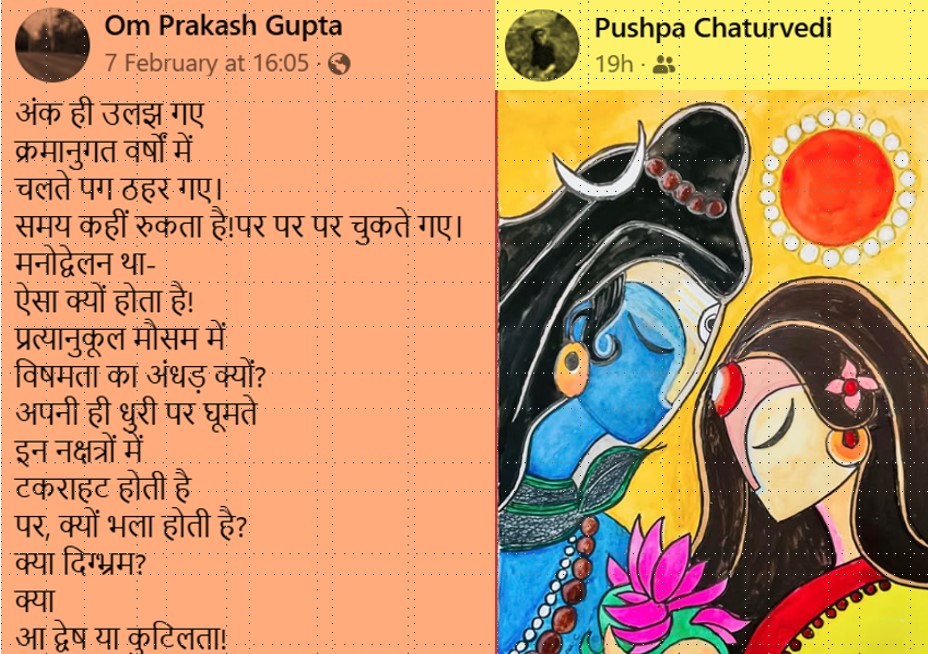
They mended hearts and bodies. For decades, the stethoscope was their instrument, the hospital their stage. But when the white apron came off, their hands turned to brush and canvas, paper and pen.
Dr. Om Prakash Gupta and Dr. Pushpa Chaturvedi —two stalwarts of MGIMS Sevagram—walked parallel yet independent paths, coloured by their devotion to medicine and art.
Both were born in 1942. Both rose to become professors. Both led their departments with distinction. They lived within a handshaking distance, and their children, too, earned their MBBS and MD degrees from Sevagram, carrying forward a legacy of healing.
Both have long enjoyed, and still do, the deep respect of the students they taught and the patients they healed.
Now in their eighties, having laid down their stethoscopes, they awakened a different part of themselves—one that speaks in colour and verse, in brushstrokes and rhythm. They bring to life what medicine often overlooks—the unspoken ache, the quiet resilience, the stories hidden in the eyes of the ill and the weary. The beauty of human frailty.
Dr. Om Prakash Gupta, the physician-poet, writes in pure Hindi—a language, rich and resonant. His verses pulse with rhythm and vigour, capturing sickness and sorrow, healing and hope, grief and greed, love and loss. He blends the voices of Nirala and Pant, Mahadevi and Maithili Sharan, weaving words that linger long after they are read.
Dr. Pushpa Chaturvedi, the paediatrician-artist, carves beauty from starkness. Her lines are bold, her colours daring. Like a scalpel in a steady hand, her brush moves with purpose. Her figures breathe, caught in moments of defiance or surrender. She finds grace in suffering, strength in fragility. She paints with the delicate ferocity of Amrita Sher-Gil, the quiet intensity of Anjolie Ela Menon. Her canvases pulse with life, demanding to be seen.
For decades, they healed with their hands. Now, they heal with their art. In hospital wards, they gave voice to the voiceless. Their patients once left their clinics with prescriptions; now, their viewers leave their works with something deeper—an understanding of the human condition, of endurance, of life’s fleeting beauty.
The poet Rainer Maria Rilke once wrote, “The only journey is the one within.” These two remarkable physicians have walked that journey in both medicine and art, teaching us to see—not just with our eyes, but with our hearts.